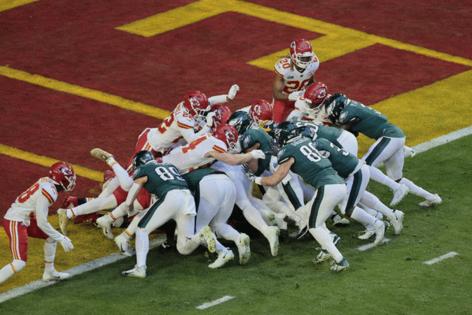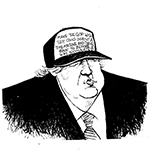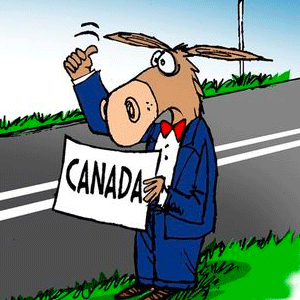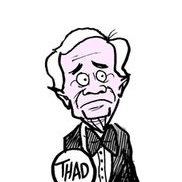NFL owners table conversations on Tush Push's future for now
Published in Football
PALM BEACH, Fla. — Conversations surrounding the Tush Push are being pushed into the future.
At the NFL’s annual meetings on Tuesday morning, a league source confirmed to The Philadelphia Inquirer that the owners opted to table the rule change proposed by the Green Bay Packers to “prohibit an offensive player from pushing a teammate who was lined up directly behind the snapper and receives the snap, immediately at the snap.” The proposal aims to eradicate the ability for offenses to run the push sneak popularized in recent years by the Eagles.
Clubs are slated to reconvene in May and could vote on the proposal, which needs at least 24 yes votes from the 32 teams to enact a change to the rules.
According to Atlanta Falcons CEO and competition committee co-chairman Rich McKay, teams discussed the Packers’ proposal for roughly 40 minutes on Tuesday before it was tabled. McKay said that Green Bay asked if it could review the language in the rule book before 2005 when offensive players pushing the ball carrier was prohibited and potentially reintroduce it in its proposal.
This isn’t the first time the Tush Push has come under scrutiny. For the last three offseasons, the competition committee has mulled over the play to some degree, but the Packers’ formal proposal to expand the “assisting the runner” rule marked an inflection point in the broader conversation surrounding the play.
The Packers cited player safety concerns in their proposal, even though league data revealed that the Tush Push led to zero injuries in 2024. Still, Packers general manager Brian Gutekunst acknowledged Monday the concern that the play could lead to injuries in the future.
“I’m very much in support of [the rule change],” Gutekunst said. “I think, certainly, the medical professionals at the league have high concerns about putting players in positions that could lead to catastrophic injuries. I think this is something that needs to be discussed and we need to be proactive with it rather than reactive.”
Buffalo Bills coach Sean McDermott, who sits on the competition committee, also expressed a sense of fear about injury risk during his media availability on Monday morning.
“Where I’m most concerned is, even though there’s not significant data out there to this point, my biggest concern is the health and safety of the players,” McDermott said. “It’s two things — it’s force, added force, number one, and then the posture of the players. Being asked to execute that type of play, that’s where my concern comes in.”
Despite their qualms about the play, both the Bills and the Packers have run different versions of the push sneak in the past. Like the Eagles, the Bills have utilized their quarterback Josh Allen as the ball carrier, while the Packers have run the play with tight end Tucker Kraft toting the football.
Gutekunst acknowledged his club’s success at running a version of the play on Monday, but he stressed that player safety ought to be the priority going forward.
“I think we owe it to our players; it’s not about success, it’s about safety,” Gutekunst said.
Packers coach Matt LaFleur concurred with Gutekunst on Tuesday morning, adding that his team would “adjust [the play] to whatever the rules may be.”
However, McKay suggested that clubs aren’t solely focused on the potential health and safety risks of the play. He said that there are “just as many people that have football concerns” about the Tush Push as there are people who have injury concerns.
“That was kind of what went on in the room, in the discussion,” McKay said. “So I wouldn’t say it was because of one particular health and safety video or discussion. It was much more about the play, the aesthetics of the play, is it part of what football has been traditionally or is it more of a rugby play? All those types of discussions.”
The Packers partially raised that concern in their proposal by citing pace of play as a reason for expanding the “assisting the runner” rule. The Tush Push was thrust back into the spotlight during this year’s NFC championship game between the Eagles and the Washington Commanders, when the Eagles ran six consecutive push sneaks at the goal line in a span of 1 minute, 13 seconds.
The Commanders incurred penalties on four of them, including three straight encroachment fouls highlighted by Commanders linebacker Frankie Luvu attempting to hurdle the Eagles’ offensive line before the snap. The referee announced that he could “award a score” to the Eagles if the Commanders’ infractions persisted.
Los Angeles Rams coach Sean McVay, who is also on the competition committee, expressed a sense of displeasure with the look of the Tush Push on Tuesday morning before the clubs’ discussion about the rules proposals.
“I don’t believe in banning something because them and Buffalo do it better than anybody else,” McVay said. “So I’m not necessarily in agreement with that. [But] I don’t like the optics of the play. It looks like a rugby scrum.”
No team has been more outspoken in support of the push sneak than the Eagles. Jalen Hurts and the Eagles offense have run it with great success, contributing to the quarterback racking up 14 rushing touchdowns (most among quarterbacks) last season. The Eagles also converted 90% of their fourth-and-1 rushing plays last year, in large part thanks to the Tush Push.
At the NFL scouting combine in February, coach Nick Sirianni objected to the notion that the Tush Push is an “automatic play” devoid of skill, a sentiment that Packers president and CEO Mark Murphy expressed in his monthly column on the team’s website in January.
“I almost feel a little insulted, because we work so hard at that play,” Sirianni said. “The amount of things that we’ve looked into how to coach that play, the fundamentals. There’s 1,000 plays out there, but it comes down to how you teach the fundamentals and how the players go through and do the fundamentals. I can’t tell you how many times we’ve practiced the snap, we’ve practiced the play, because it’s not a play that it’s easy to practice.”
Speaking Tuesday morning before the owners tabled the proposal, Sirianni said that player health and safety comes “first and foremost,” but he emphasized that the Eagles and the rest of the league have been “healthy on the play.”
Sirianni also reiterated why he has a penchant for the Tush Push, particularly because of the team’s ability to run complementary plays off the look that can generate explosive plays. Still, he acknowledged that the Eagles could be just as dominant running a traditional quarterback sneak as they are the push sneak if the “assisting the runner” rule is expanded to include pushing.
“We’d be good at it, no doubt, because we’ve got really good players,” Sirianni said. “I think somebody said something the other day, ‘Well, you coach the push different.’ The push just has extra push. Everything else is coached exactly the same. So we’ve got a lot of reps at it. We’ve been really successful at it. I think we’d be able to be successful either way. But I think there’s a lot of exciting things, again, that can happen off the push.”
The Eagles haven’t been alone in their support of the Tush Push. Shane Steichen, the Indianapolis Colts coach who previously served as Eagles offensive coordinator, and Kevin Stefanski, the Cleveland Browns coach, spoke positively of the play on Monday.
“To eliminate a quarterback sneak from getting pushed?” Stefanski said. “Yeah, I don’t know that it’s something that needs to be legislated out of the game. The injury data’s not there. So I would be in favor of keeping the rules as they are. You’re welcome, Coach Sirianni.”
Steichen concurred: “I think it should stay in football. That’s just my opinion.”
Pushing the ball carrier had previously been considered an infraction under the “assisting the runner” rule until 2005, when the league decided the penalty would only apply to pulling and carrying the runner. The rule was changed at the time, McKay said, because it was difficult to officiate downfield.
If the Packers’ proposal is passed, offenses flagged for pushing the ball carrier would incur a 10-yard penalty.
©2025 The Philadelphia Inquirer. Visit inquirer.com. Distributed by Tribune Content Agency, LLC.










Comments